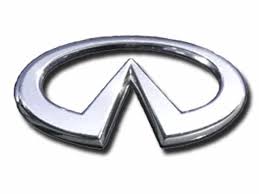I35 V6-3.5L (VQ35DE) (2003)
/Page-389001.png)
Refrigerant: Testing and Inspection
WARNING:
-
CFC-12 (R-12) refrigerant and HFC-134a (R-134a) refrigerant are not compatible. If the refrigerants are mixed and compressor
malfunction is likely to occur; refer to "CONTAMINATED REFRIGERANT" below. To determine the purity of HFC-134a (R-134a) in
the vehicle and recovery tank, use Refrigerant Recovery/Recycling Recharging equipment (ACR4) (J-39500-INF) and Refrigerant
Identifier.
-
Use only specified lubricant for the HFC-134a (R-134a) A/C system and HFC-134a (R-134a) components. If lubricant other than that
specified is used, compressor malfunction is likely to occur.
-
The specified HFC-134a (R-134a) lubricant rapidly absorbs moisture from the atmosphere. The following handling precautions must be
observed:
a. When removing refrigerant components from a vehicle, immediately cap (seal) the component to minimize the entry of moisture from the
atmosphere.
b. When installing refrigerant components to a vehicle, do not remove the caps (unseal) until just before connecting the components.
Connect all refrigerant loop components as quickly as p05sible to minimize the entry of moisture into system.
c. Only use the specified lubricant from a sealed container. Immediately reseal containers of lubricant. Without proper sealing, lubricant
will become moisture saturated and should not be used.
d. Avoid breathing A/C refrigerant and lubricant vapor or mist. Exposure may irritate eyes, nose and throat. Remove HFC-134a (R-134a)
from the A/C system, using certified service equipment meeting requirements of SAE J2210 HFC-134a (R-134a) recycling equipment, or
J2209 HFC-134a (R-134a) recovery equipment. If accidental system discharge occurs, ventilate work area before resuming service.
Additional health and safety information may be obtained from refrigerant and lubricant manufacturers.
e. Do not allow lubricant (Nissan A/C System Oil Type S) to come in contact with styrofoam parts. Damage may result.
CONTAMINATED REFRIGERANT
If a refrigerant other than pure R-134a is identified in a vehicle, your options are:
-
Explain to the customer that environmental regulations prohibit the release of contaminated refrigerant into the atmosphere.
-
Explain that recovery of the contaminated refrigerant could damage your service equipment and refrigerant supply.
-
Suggest the customer return the vehicle to the location of previous service where the contamination may have occurred.
-
If you choose to perform the repair recover the refrigerant using only dedicated equipment and containers. Do not recover contaminated refrigerant
into your existing service equipment. If your facility does not have dedicated recovery equipment you may contact a local refrigerant product
retailer for available service. This refrigerant must be disposed of in accordance with all federal and local regulations. In addition replacement of
all refrigerant system components on the vehicle is recommended.
-
If the vehicle is within the warranty period the air conditioner warranty is void. Please contact Nissan Customer Affairs for further assistance.
